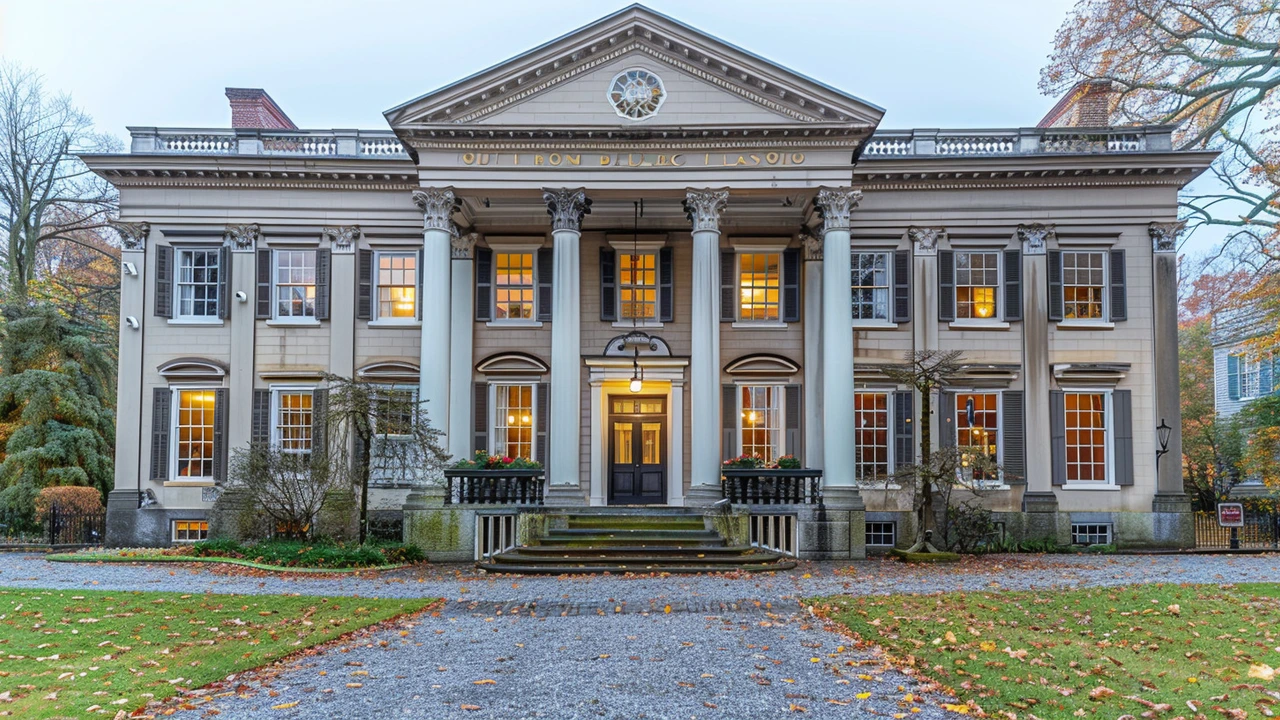Federal Architecture: How to Recognize and Work With the Style
You probably pass Federal-style houses without thinking twice. They look simple at first, but the style shaped early American towns from about 1780 to 1830. If you want to spot one, restore one, or borrow its features for a modern house, there are clear clues and practical rules that help.
Key features that make a Federal house
Look for balance and lightness. Federal houses favor symmetry: evenly spaced windows, a centered front door, and a calm, rectangular facade. Doors often have fanlights or semicircular transom windows above them, plus narrow sidelights. Windows are usually double-hung with thin sashes and six-over-six or similar small panes. Brick and clapboard are common materials; brick often laid in Flemish bond. Roofs are low-pitched, and porches are modest or absent compared with later styles.
Decor is delicate, not heavy. You'll see thin columns or pilasters, elliptical or oval rooms and windows, decorative swags, urns, and small classical details drawn from Roman models filtered through the British Adam style. Interiors favor slender moldings, simple mantels with light carving, and rooms arranged for formal entertaining.
Practical tips for owners and renovators
Keep proportions, not every detail. When renovating, preserving the building’s proportions—window placement, door location, cornice lines—matters more than matching every trim piece. Replace windows only when necessary; repair original sash and glazing where possible. If replacement is unavoidable, pick slim muntins and wood frames that match the original sightlines.
Choose materials that age well. Use lime-based mortar for old brick, restore wooden shingles or clapboard with similar profiles, and avoid thick vinyl trim that hides original details. For HVAC, hide modern systems in basements or closets and run ductwork through attic spaces to preserve ceilings and moldings.
Blend modern needs with historic character. Kitchens and bathrooms can be modern, but place them in secondary spaces or at the rear to keep main rooms intact. Pick fixtures and colors that echo Federal restraint—muted blues, soft grays, warm off-whites—and add simple brass or black hardware rather than oversized or ornate pieces.
Exterior and landscape matter. A Federal home looks its best with simple, formal plantings: low boxwoods, straight walkways, and an uncluttered front yard. Keep porches minimal; if adding columns, match the slenderness typical of the style rather than oversized classical posts.
Check local rules and incentives. Many towns offer historic-preservation guidance, grants, or tax credits. Talk to your local historic commission before making big changes—approval is often required and they can point you to craftsmen and correct materials.
Federal architecture is practical to live in and surprisingly adaptable. Respect its balance, keep details thin and refined, and you can update systems and rooms without losing the style’s calm, elegant look.

Why Federal Architecture Still Inspires Modern Designers
Federal architecture, with its balanced proportions and classical elements, continues to influence modern designers. Rooted in the late 18th and early 19th centuries, this style is characterized by its elegance, symmetry, and use of Roman and Greek elements. The enduring appeal of Federal architecture lies in its timeless aesthetic, attention to detail, and its ability to convey a sense of history and stability. In this article, we'll explore the fundamental principles of Federal architecture, its notable characteristics, and its lasting impact on contemporary design.
Read more
The Lasting Influence of Federal Architecture in Modern Design
Federal architecture, originating in the late 18th century, continues to shape modern design with its emphasis on symmetry, balance, and classical details. This article explores how these historic architectural principles remain relevant today and their impact on contemporary buildings.
Read more
Federal Architecture: Elegance and Symmetry Embodied
Federal architecture, rooted in the late 18th and early 19th centuries in America, exemplifies elegance and symmetry. This article delves into its distinctive characteristics, notable examples, and tips on identifying and appreciating this architectural style. Through detailed insights, readers will understand the cultural and historical significance of Federal architecture.
Read more
Exploring Federal Architecture: Timeless Designs in Modern America
This article delves into the enduring charm and significance of Federal architecture. It explores the origin and development of this style, primarily during America's early years. Readers will gain insights into the defining characteristics of Federal architecture, see its influence on modern designs, and discover notable examples that stand today. The piece also offers practical advice on how to recognize and appreciate the nuances of this architectural style.
Read more
Exploring Federal Architecture: A Showcase of American Design Excellence
Federal architecture stands as a profound exhibit of American history and design principles, embodying an era that significantly shaped the nation's identity. This article delves into the essence of Federal architecture, tracing its origins, key characteristics, and lasting influence on modern building design. It highlights the architectural mastery of the Federal period, exploring the underlying symbolism, and the enduring appeal of its structures. Through examining iconic examples and offering insights into preserving these historic edifices, the article serves as a comprehensive guide to understanding and appreciating the grandeur and sophistication of Federal architecture.
Read more